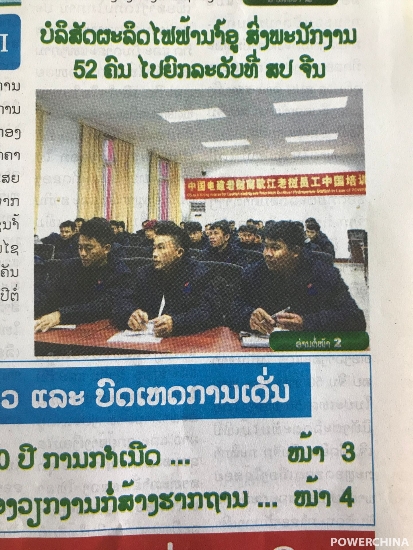A total of 52 Laotian employees recruited by POWERCHINA recently went to China's Sichuan province for a four-month pre-job training program, making the front page of the Pasaxon (The People), the newspaper of the Lao People's Revolutionary Party.
 |
|
The front page of a recent issue of Laos' Pasaxon newspaper focuses POWERCHINA's 52 Laotian employees' pre-job training in China's Sichuan province. [Photo/POWERCHINA] |
The Lao government and all sectors of society have praised POWERCHINA's contribution in fulfilling social responsibility and its local role in Laos.
After intensive training, the Laotian employees will be assigned to hydropower stations in the Nam Ou River basin to undertake production and operation tasks. They will become the backbone of the production technology and play an important role in the electric power production of the Nam Ou River project.
A Laotian staff member who has worked on the Nam Ou River project for many years said that POWERCHINA has done a good job in resettlement and livelihood restoration from construction to operation, actively fulfilling social responsibilities and establishing relationships with local governments and villagers.
The implementation of whole-life cycle innovation management and the realization of mutual benefits from the project have written a new chapter in the China-Laos relationship.
"From the perspective of a Laotian, we must welcome more powerful and responsible Chinese enterprises such as POWERCHINA to Laos, develop Lao resources, promote the economy, and enrich Laotians," he said.
The Nam Ou River project adheres to the philosophy of "building a country's projects, fulfilling social responsibilities, and benefiting local communities."
The project has provided more than 8,000 jobs in Laos. The whole river basin relocation project covers 10 counties in 10 provinces, with a total immigration of more than 2,300 households and a resettlement population of more than 12,600 people.